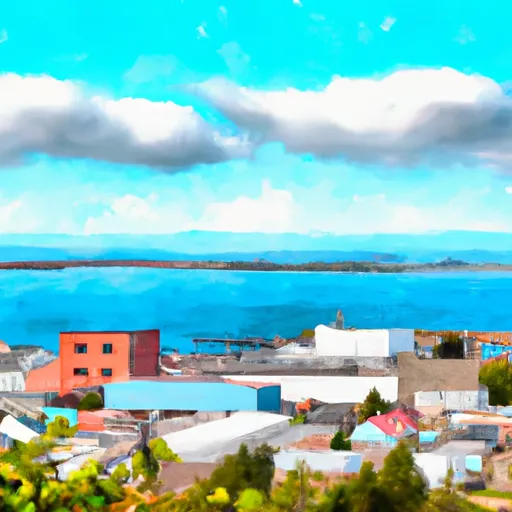-
 Snoflo Premium
Snoflo Premium
Get unlimited access to all our content
With no Ad interruptions! - Start Your Free Trial Login with existing account
Tokeland
Eden Index
Climate
6.1
•
Recreation
3.7
•
Community
•
Safeguard
3.7/10

Tokeland, Washington is a small coastal community located on Willapa Bay in Pacific County. This picturesque area is known for its stunning natural beauty and abundant outdoor recreation opportunities.
Climate-wise, Tokeland experiences a temperate maritime climate, characterized by mild summers and cool, wet winters. The average annual temperature hovers around 50°F (10°C), with precipitation evenly distributed throughout the year. Visitors can expect foggy mornings, occasional rain showers, and cool sea breezes, making it an ideal destination for those seeking a refreshing coastal retreat.
The hydrology constituents of Tokeland are heavily influenced by its location along Willapa Bay. This bay is a vital estuary for many aquatic species, offering a diverse and rich ecosystem. Visitors can witness an array of wildlife, including migratory birds, seals, and even occasional whales. Willapa Bay is also renowned for its abundance of shellfish, making it a popular spot for clamming and crabbing.
Outdoor enthusiasts will find plenty of activities to indulge in while in Tokeland. The area offers excellent fishing opportunities, both in the bay and nearby freshwater rivers. Additionally, visitors can enjoy boating, kayaking, and beachcombing along the miles of pristine shoreline. The nearby Willapa National Wildlife Refuge provides opportunities for birdwatching, hiking, and wildlife photography.
In summary, Tokeland, Washington offers a mild coastal climate, rich hydrology constituents, and diverse outdoor recreation opportunities, making it an idyllic getaway for nature lovers and outdoor enthusiasts alike.
What is the Eden Index?
The Snoflo Eden Index serves as a comprehensive rating system for regions, evaluating their desirability through a holistic assessment of climate health, outdoor recreation opportunities, and natural disaster risk, acknowledging the profound impact of these factors on livability and well-being.
Climate Health Indicator (CHI): 6.1
Tokeland receives approximately
1918mm of rain per year,
with humidity levels near 86%
and air temperatures averaging around
10°C.
Tokeland has a plant hardyness factor of
8, meaning
plants and agriculture in this region tend to thrive here all year round.
By considering the ideal temperature range, reliable water supplies, clean air, and stable seasonal rain or snowpacks, the Climate Health Indicator (CHI) underscores the significance of a healthy climate as the foundation for quality living.
A healthy climate is paramount for ensuring a high quality of life and livability in a region, fostering both physical well-being and environmental harmony. This can be characterized by ideal temperatures, reliable access to water supplies, clean air, and consistent seasonal rain or snowpacks.
Weather Forecast
Streamflow Conditions
Washington Coastal
Area Rivers
Washington Coastal
Snowpack Depths
Washington Coastal
Reservoir Storage Capacity
Washington Coastal
Groundwater Levels
Recreational Opportunity Index (ROI): 3.7
The Recreational Opportunity Index (ROI) recognizes the value of outdoor recreational options, such as parks, hiking trails, camping sites, and fishing spots, while acknowledging that climate plays a pivotal role in ensuring the comfort and consistency of these experiences.
Access to outdoor recreational opportunities, encompassing activities such as parks, hiking, camping, and fishing, is crucial for overall well-being, and the climate plays a pivotal role in enabling and enhancing these experiences, ensuring that individuals can engage in nature-based activities comfortably and consistently.
Camping Areas
| Campground | Campsites | Reservations | Toilets | Showers | Elevation |
|---|---|---|---|---|---|
| Grayland Beach State Park | 58 | 22 ft | |||
| Ocean City State Park | 175 | 17 ft | |||
| Westport Recreation Park - Military | None | 16 ft | |||
| Twin Harbors State Park | 300 | 19 ft |
Catastrophe Safeguard Index (CSI):
The Catastrophe Safeguard Index (CSI) recognizes that natural disaster risk, encompassing floods, fires, hurricanes, and tornadoes, can drastically affect safety and the overall appeal of an area.
The level of natural disaster risk in a region significantly affects safety and the overall livability, with climate change amplifying these risks by potentially increasing the frequency and intensity of events like floods, fires, hurricanes, and tornadoes, thereby posing substantial challenges to community resilience and well-being.
Community Resilience Indicator (CRI):
The Community Resilience Indicator (CRI) recognizes that education, healthcare, and socioeconomics are crucial to the well-being of a region. The CRI acknowledges the profound impact of these elements on residents' overall quality of life. By evaluating educational resources, healthcare accessibility, and economic inclusivity, the index captures the essential aspects that contribute to a thriving community, fostering resident satisfaction, equity, and social cohesion.

